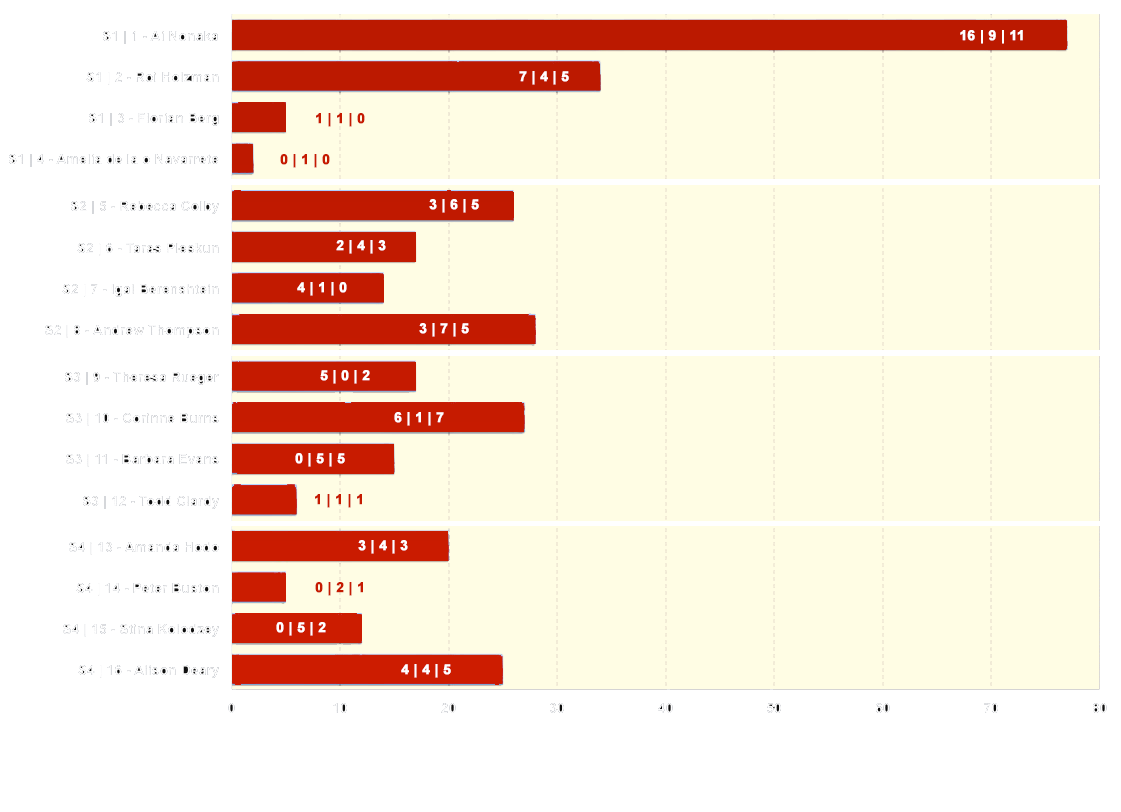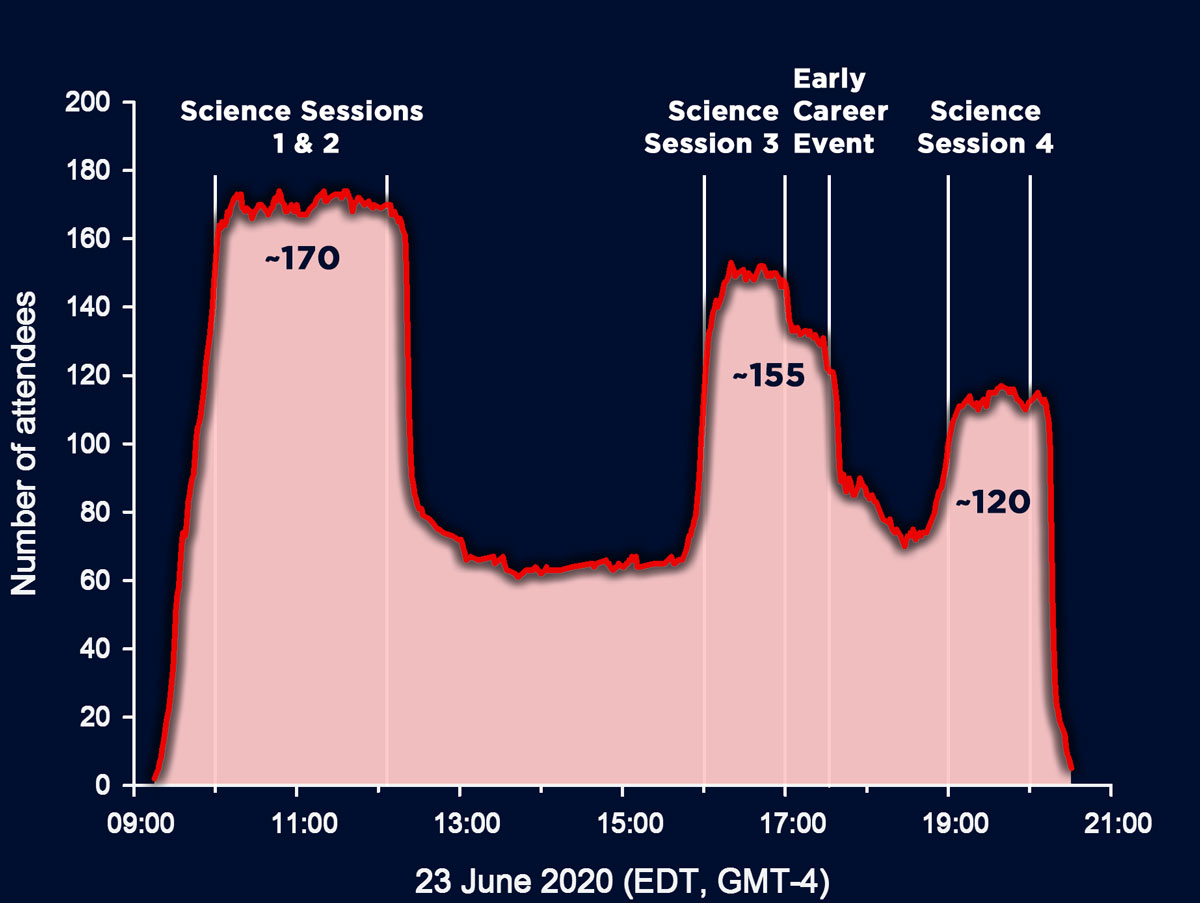
Here are the winners of the "Larval Fish" and "Larval Fish Science" picture contests!
Competition A: Larval Fish
Click here for all results and submissions
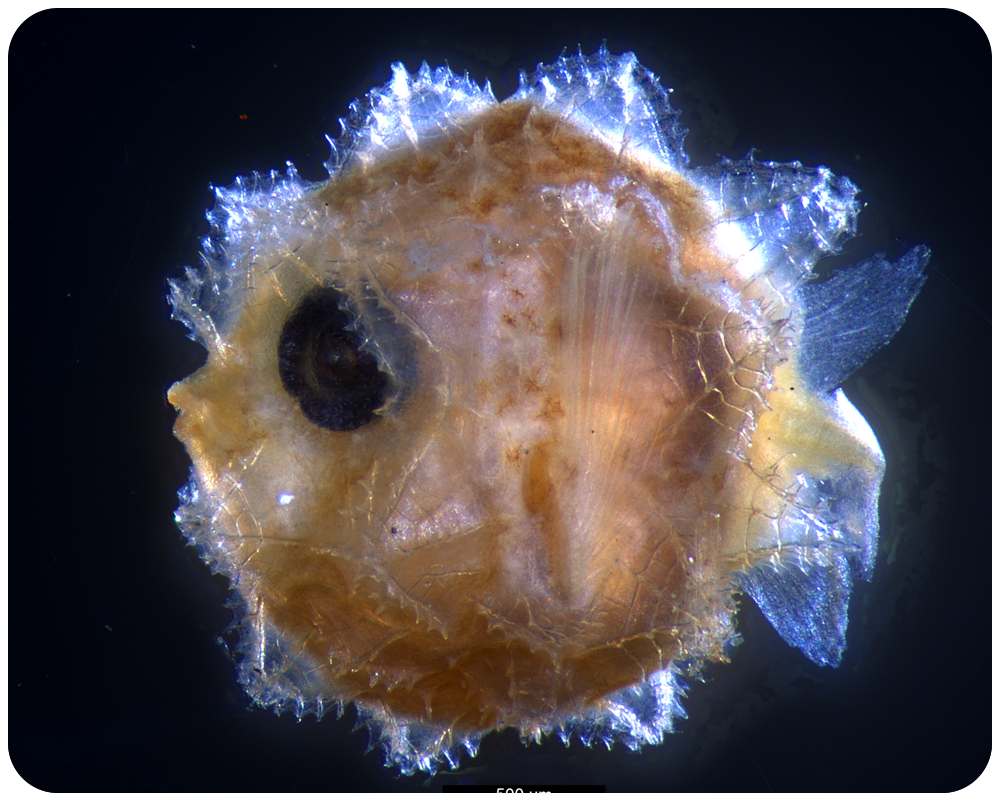 Winner - Kerryn Parkinson | Mola sp - a larval sunfish collected off New South Wales, Australia.
Winner - Kerryn Parkinson | Mola sp - a larval sunfish collected off New South Wales, Australia.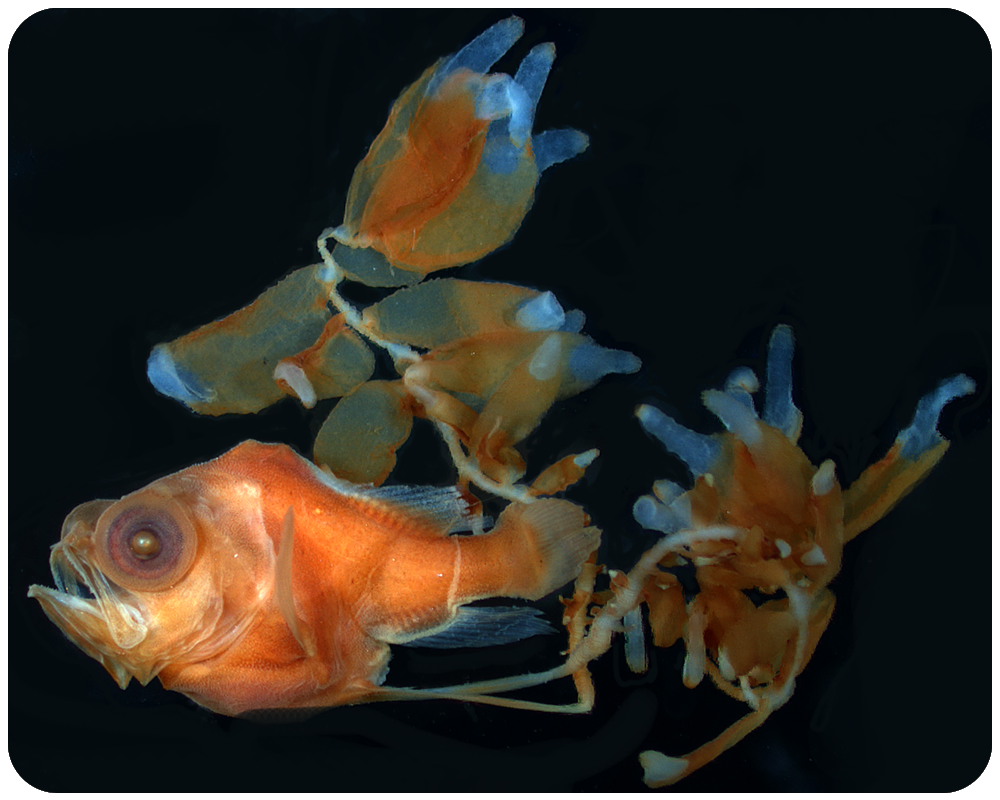 2nd place - David Johnson | 6 mm Gibberfish larvae (Gibberichthys spp)
2nd place - David Johnson | 6 mm Gibberfish larvae (Gibberichthys spp)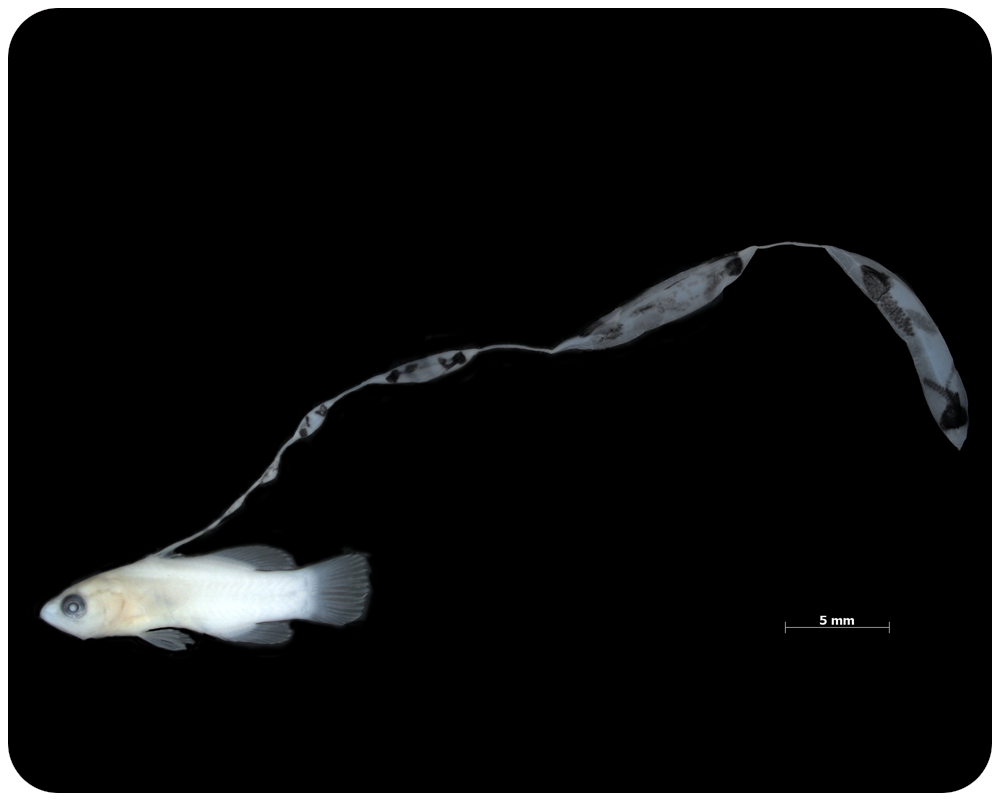 3rd place - Ai Nonaka | Liopropoma eukrines 13.3mm. This USNM specimen was collected by my friends who are blackwater divers in Florida.
3rd place - Ai Nonaka | Liopropoma eukrines 13.3mm. This USNM specimen was collected by my friends who are blackwater divers in Florida.
Competition B: Larval Fish Science
Click here for all results and submissions
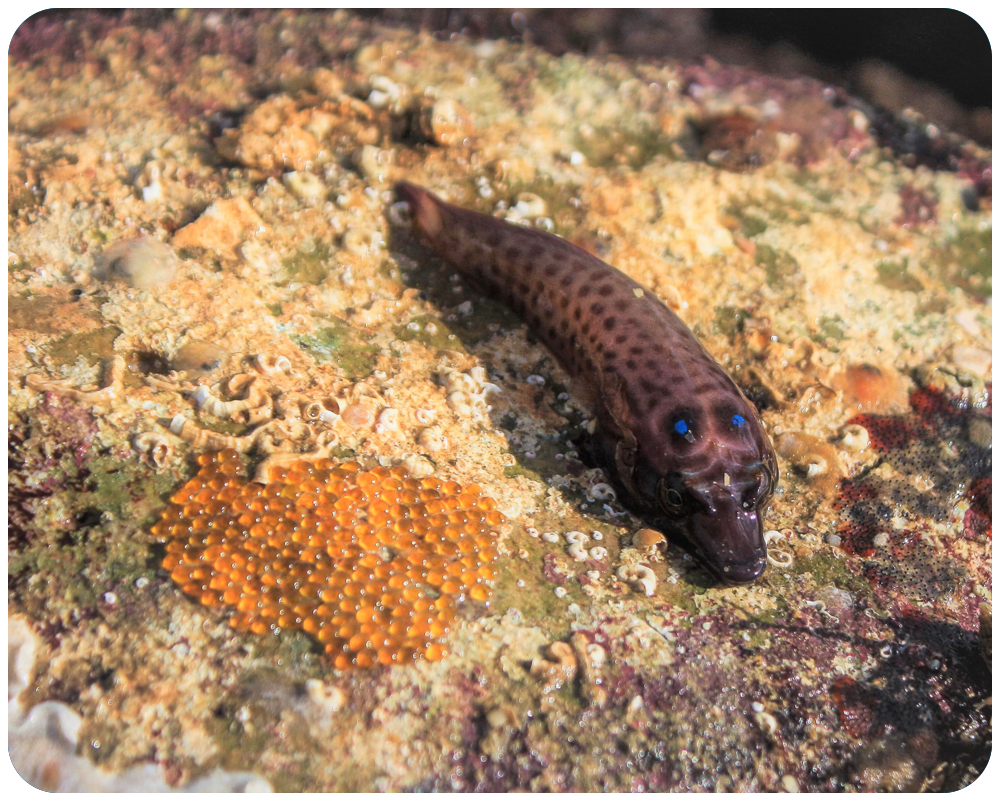 Winner - Ana Faria | Clingfish male (Lepadogaster purpurea) next to the embryos. Males provide parental care throughout the embryonic stage.
Winner - Ana Faria | Clingfish male (Lepadogaster purpurea) next to the embryos. Males provide parental care throughout the embryonic stage.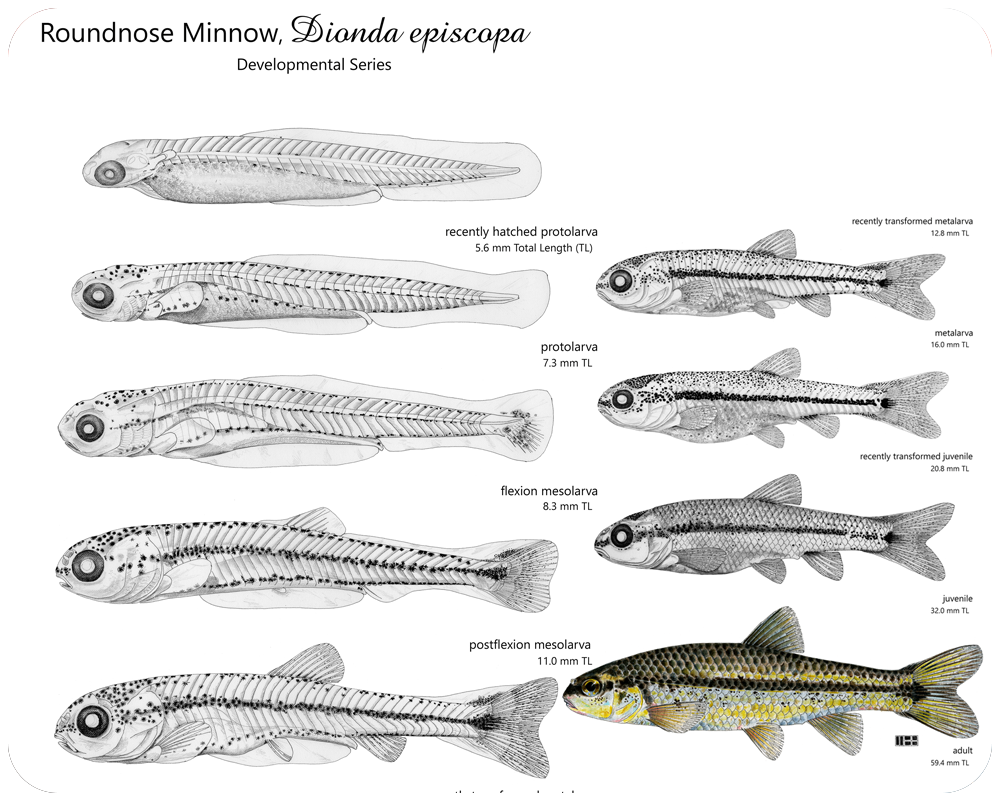 3rd place - Howard Brandenburg | Illustrations complied from the Guide to Cyprinids of the middle and Lower Pecos River. Illustrations by W. H. Brandenburg
3rd place - Howard Brandenburg | Illustrations complied from the Guide to Cyprinids of the middle and Lower Pecos River. Illustrations by W. H. Brandenburg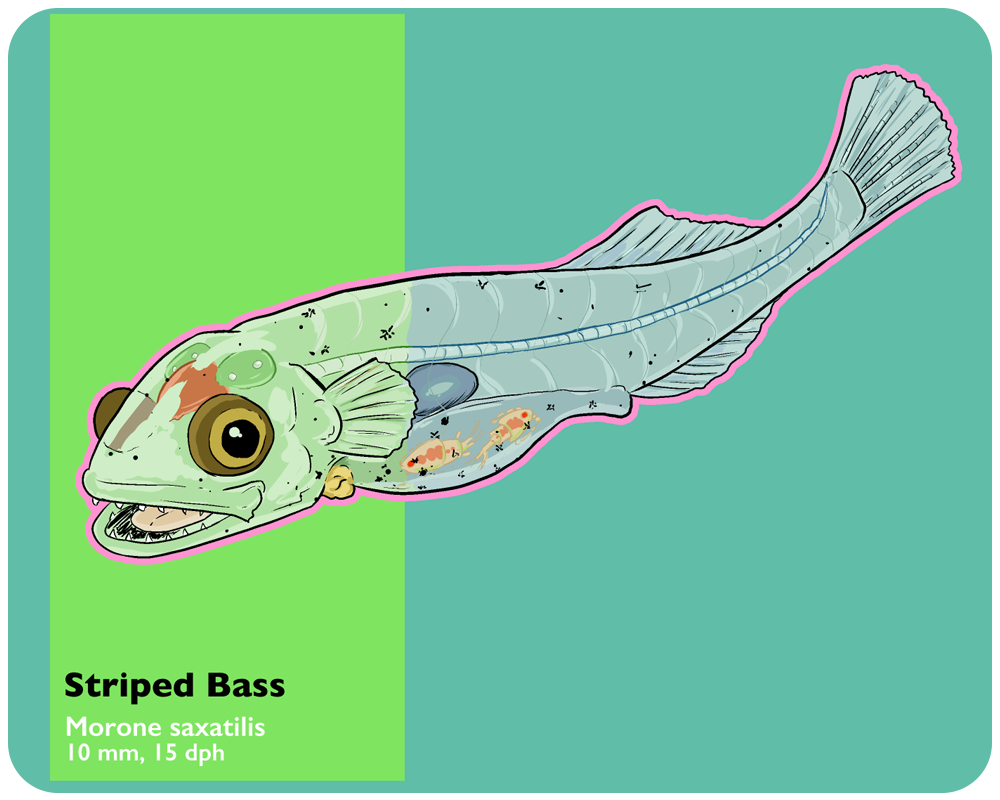 2nd place - Olivier Morissette | This is a striped bass larva illustration I did in the context of the Twitter's #SundayFishSketch daily theme on early life stages of fish.
2nd place - Olivier Morissette | This is a striped bass larva illustration I did in the context of the Twitter's #SundayFishSketch daily theme on early life stages of fish.
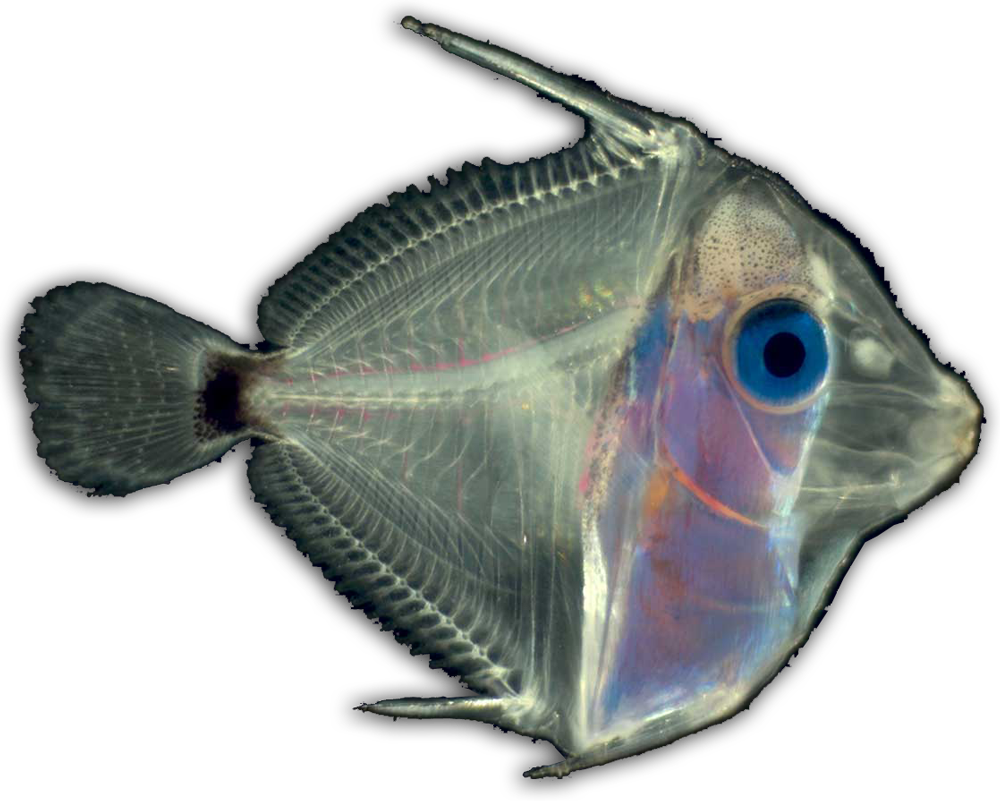

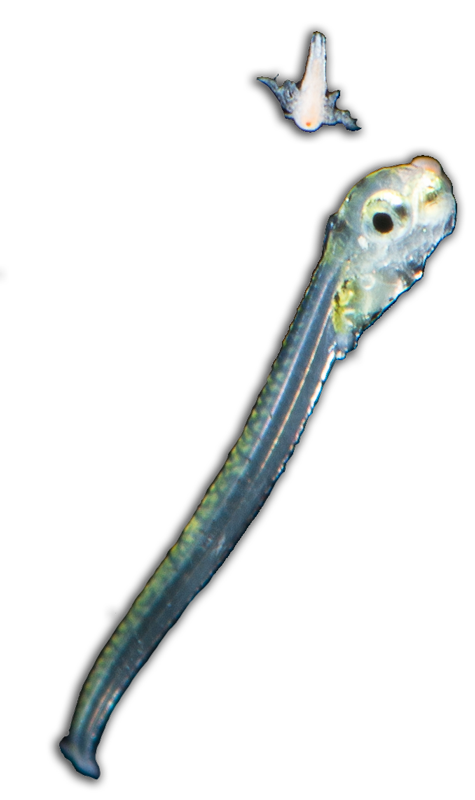
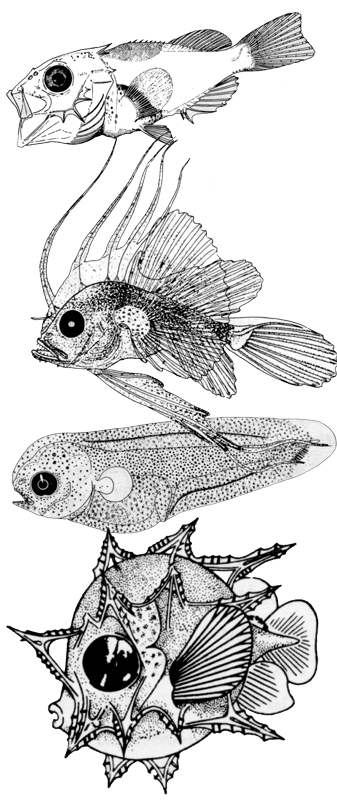
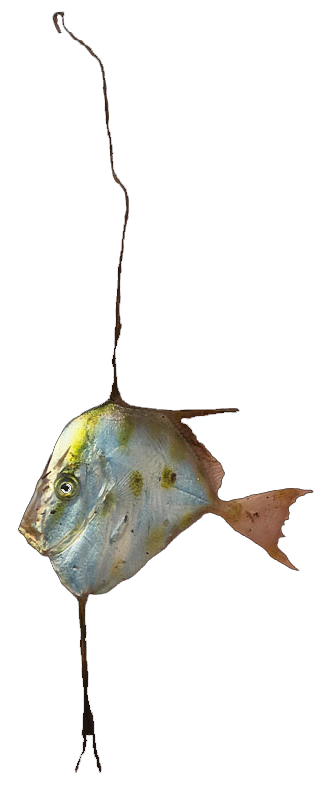


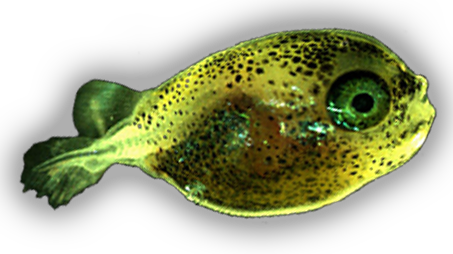
- A fun mixture of science talk and online networking for our community to enjoy and remain connected
- 16 diverse presentations in 4 science sessions across the day to accommodate speakers from all time zones
- Picture wall and photo contest!
You voted online for the best presentation. Here are the winners!
See how 252 attendees of the Virtual Larval Fish Science Town Hall spend their day.
Full schedule | Speaker Bio's, talk titles & abstracts and videos!
Opening remarks: 09:45 - 10:00 AM (=0945-1000 EDT = GMT-4)
Science session 1: 10:00 - 11:00 AM (=1000-1100 EDT = GMT-4)
S1 | 1 – Ai Nonaka / Blackwater diving: An exciting window into the planktonic arena and its potential to enhance the quality of larval fish collections 1000 EDT (GMT-5)

"I am a research assistant in the Division of Fishes at the NMNH, DC. I am Japanese. My work is sorting and identifying marine larvae from the Pacific and the Atlantic, clearing and staining specimens, databasing and photographing larval specimens for the collection, DNA barcoding analysis for species identification."
Over the last two decades pelagic night (blackwater) diving and photography have become a popular recreational activity. The resultant images provide an exciting window into the planktonic arena and the way larval fishes appear and interact within it. Accordingly we are able to see the often elaborate appendages and other specializations of these larvae as they appear in situ, prior to extensive net and fixation damage. We present in-situ and post-fixation photos of these larvae fixed in high-proof ethanol in Hawaii, with barcode identifications. With the right motivation, this recreational diving fad could significantly enhance natural history collections and our knowledge of larval fishes.
Theme: Form, function, development
Voted 'Best presentation'
Ai's talk is not publicly available at this time. Please contact her directly, if you're interested to watch it.
S1 | 2 – Roi Holzman / The physics of being little: how are swimming and feeding different for larval fishes? 1015 EDT (GMT-5)

"I am a professor at the school of zoology at Tel Aviv University and a resident scientist at the Inter-University Institute for Marine Sciences in Eilat, Israel. My studies focus on small-scale hydrodynamic interactions between organisms and the flow around them, on functional morphology and the evolution of complex functional systems. I work mainly on fish but also on zooplankton and corals, among other marine organisms."
Larval fish experience >90% mortality during the "critical period", attributed to starvation, disease, predation, advection to unsuitable habitats, among other mechanisms. However, most studies focused on biological variables to explain larval mortality, often not accounting for the interaction between the larvae and the fluid around it, which differs greatly from that of larger fish. Due to their small size, first-feeding larvae experience the water around them as a viscous medium. In this talk, I will review how dwelling in this viscous affects the larvaâ€TMs movements and their ability to perform fitness-determining behaviours such as swimming, feeding and respiration.
Theme: Form, function, development
2nd place, "Best Presentation"
Download or watch Roi's presentation:
S1 | 3 – Florian Berg / Growth trade-offs for spring- and autumn-hatched larvae; results from a long-term experiment 1030 EDT (GMT-5)

"I’m a researcher in the „Pelagic fish” group at the Institute of Marine Research in Bergen, Norway. My two main research activities are (1) studying the population dynamics of herring and sprat and (2) conducting multigenerational experiments to investigate phenotypic plasticity of herring during their early life stage reared under common garden conditions."
Atlantic herring populations differ in their spawning time, and spring and autumn spawning populations are genetically distinct. Offspring of these populations encounter seasonal variations in productivity. We conducted a crossing experiment and reared herring offspring for one-year with seasonal varying light cycle starting either in spring or autumn, using two fixed temperature levels and food provided in excess. We hypothesized that longer daylengths early in life would provide an overall growth advantage compared to those experiencing it later in life due to higher size-dependent growth rates at smaller sizes. Larvae with initial spring conditions grew initially faster. However, contrary to our expectations, offspring with initial autumn conditions had the same size after one year. Our results also show that herring in higher temperatures were growing faster, even when correcting for the amount of day-degrees.
Theme: Climate change effects on larval fish
Download or watch Florian's presentation:
S1 | 4 – Amelia de la o Navarrete / Preferential habitat of small pelagic fish larvae Jack Mackerel in the southern part of the California Current 1045 EDT (GMT-5)

"I currently reside in La Paz, Baja California Sur, Mexico, where I am a postgraduate student at the National Polytechnic Institute-Interdisciplinary Center for Marine Sciences, with the doctoral research in preferential habitat of small pelagic larvae in the southern part of the California Current.
"
This brief talk is about, the preferential habitat of T. symmetricus larvae in the southern part of the California Current through a comparison between different explanatory variables such as temperature, salinity, dissolved oxygen, dynamic heights, depth of the layer of mix and as an innovative part, include the temperature fronts on different time scales (5-7 days) during 2006-2010, under the hypothesis that the preferential habitat of T. symmetricus will be favored by the inclusion of temperature fronts caused by different structures of mesoscale in the southern part of the California Current.
Theme: Recruitment processes
Download or watch Amelia's presentation:
Science session 2: 11:00 AM - 1200 PM (=1100-1200 EDT = GMT-4)
S2 | 5 – Rebecca Colby / Ready and swimming: ontogenetic changes preceding emigration in juvenile Alewife (Alosa pseudoharengus) 1100 EDT (GMT-5)

"I am a PhD candidate in the Schultz lab at the University of Connecticut (UConn) Department of Ecology and Evolutionary Biology. My research focuses on identifying physiological shifts involved in juvenile river herring migration and impacts of drought-imposed loss of habitat connectivity."
As a diadromous species, juvenile Alewife (Alosa pseudoharengus) must meet demands of energetically costly hurdles, such as shifting osmotic stressors (e.g. salinity) and performance demands (e.g. predator avoidance and sustained swimming), during migration. There is limited evidence for preparatory changes in Alewife prior to emigration, and expanding this knowledge is important to understanding mechanisms underpinning migratory success as well as the efficacy of conservation efforts for this species of concern. This investigation of potential tissue-specific and whole-body level changes, including osmoregulatory ability, swimming performance, and energetic capacity, yielded some novel evidence for alterations that may be important to life-at-sea.
Theme: Form, function & development
Download or watch Rebecca's presentation:
S2 | 6 – Taras Pleskun / Domestic production and application of concentrated algae pastes 1115 EDT (GMT-5)

"I am currently a graduate student studying aquaculture at University of Florida. My passion is the cultivation of all organisms, but I have a special interest in microalgae. My ambition is to advance my understanding so that I may develop mass-cultivation systems and contribute to the development of sustainable feeds as well as novel algae-derived materials and technologies.
"
Algae pastes have many applications in the modern ornamental fish hatchery. Algae pastes are used to cultivate and enrich live feeds with PUFA's (ARA/EPA/DHA). They can also be used to darken water or for 'green water' culture. This presentation will go into the limitations of live algae production, current methods for algae paste production/storage and prospects for expansion of application in the future.
Theme: Ornamental aquaculture
Download or watch Taras' presentation:
S2 | 7 – Igal Berenshtein / Marine fish larvae consistently use external cues for orientation 1130 EDT (GMT-5)

"I am a quantitative marine ecologist working on the broad aspects of ecological and environmental questions by integrating analytical approaches, such as biophysical modeling, behavioral experiments, empirical studies, and advanced data analyses. One of my main interests is the effect of larval behavior on dispersal and population connectivity. I completed a first postdoc with Prof. Claire Paris (University of Miami) working on marine pollution and larval dispersal, and now work at the Cooperative Institute for Marine and Atmospheric Studies on ecosystem modeling in the Gulf of Mexico."
Multiple studies have demonstrated that fish larvae swim directionally. Directional swimming can be achieved using internal stimuli or with reference to external cues. It is currently unclear which type is more prevalent with respect to fish larvae. To test this question, we analyze a large dataset of in situ larval-fish orientation experiments, involving a wide range of species from various geographic locations. We compared observed orientation patterns to those expected under a strict use of internal cues. We find a robust support for the use of external cues by fish larvae, both at the individual and at the species levels.
Theme: Sensory biology & behavior
Igal's talk is not publicly available at this time. Please contact him directly, if you're interested to watch it.
S2 | 8 – Andrew Thompson / The CalCOFI program: Monitoring fish larvae off the West Coast of the US for 70 years 1145 EDT (GMT-5)

"I am a NOAA research biologist from La Jolla, CA. I use larval fish and invertebrates collected by CalCOFI to elucidate dynamics of the California Current Ecosystem (CCE). Over my career, I researched fish dynamics in Appalachian and urbanized Los Angeles streams, coral reefs, and now the CCE."
The California Cooperative Oceanic Fisheries Investigation (CalCOFI) is a partnership between California Department of Fish and Wildlife, the National Oceanic and Atmospheric Administration and Scripps Institution of Oceanography. CalCOFI has been monitoring physical and biological aspects of the California Current Ecosystem from fixed stations since 1949. CalCOFI provides fishery-independent indices of spawning stock biomass for hundreds of fishes through ichthyoplankton sampling. As such, we are able to contextualize how recent environmental perturbations such as the 2014-2016 marine heatwave affects the CCE relative to the past 70 years. I will briefly describe the history of CalCOFI and discuss recent research results by our group using CalCOFI ichthyoplankton data.
Theme: Ichthyoplankton time series
3rd place, "Best presentation"
Download or watch Andrew's presentation:
Science session 3: 4:00 - 5:00 PM (=1600-1700 EDT = GMT-4)
S3 | 9 – Theresa Rueger / Natal philopatry increases relatedness within groups of coral reef cardinalfish 1600 EDT (GMT-5)

"I am a Marie Curie postdoctoral fellow currently based in Boston. I study coral reef fish behavior and evolution and am interested in the link between larval dispersal patterns and the genetic substructure of marine populations."
For most marine organisms, larval dispersal in open waters is thought to minimise kin associations within populations. However, recent molecular evidence and theoretical approaches have shown that limited dispersal, sibling cohesion, and/or differential reproductive success can lead to kin-association and elevated relatedness. Here, we tested the hypothesis that limited dispersal explains small-scale patterns of relatedness in the pajama cardinalfish Sphaeramia nematoptera. We used 19 microsatellite markers to assess parentage of 233 juveniles and pairwise relatedness among 527 individuals from 41 groups in Kimbe Bay, Papua New Guinea. We demonstrate that natal philopatry at the group level causes small- scale patterns of genetic relatedness in a marine fish.
Theme: Recruitment processes
Download or watch Theresa's presentation:
S3 | 10 – Corinne Burns / Drivers and patterns of early larval growth in redfish (Sebastes mentella), from the Gulf of St. Lawrence 1615 EDT (GMT-5)

"My love of larval fish has brought me to Québec where I am a PhD student in Prof. Dominique Robert’s lab at the Université du Québec à Rimouski. I’m currently researching the diet and growth of larval Atlantic redfish in order to identify bottom-up processes that regulate recruitment of this species in the Gulf of St. Lawrence. "
We aimed to understand the nature of the relationship between feeding success and growth of larval redfish (Sebastes mentella) using larval gut content and otolith microstructure in order to identify potential mechanisms that regulate larval survival and recruitment of the Gulf of St. Lawrence stock. Recent growth was positively correlated with larval body depth, a proxy for condition. As larvae aged, the source of the carbon (prey taxa consumed), rather than the total amount of carbon consumed, became increasingly more important in explaining larval condition, and therefore growth, indicating a potential critical period within the early larval stage for redfish.
Theme: Recruitment processes
Download or watch Corinne's presentation:
S3 | 11 – Barbara Evans / Implications of cone photoreceptor mosaic structures in juvenile and larval muskellunge (Esox masquinongy) 1630 EDT (GMT-5)
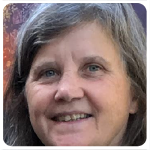
"I am currently Biology faculty at Lake Superior State University in Sault Ste. Marie, MI. My research interest is diversity and developmental timeline of the fish retina, as it relates to the visual ecology of each species. I use histology, behavior and molecular techniques to study retinal structure and function."
Unlike the square cone mosaic typical of many fish species, the juvenule muskellunge (Esox masquinongy), reveals a triangular cone photoreceptor mosaic. Although previously reported in Northern pike (Esox lucius), the function of this triangular mosaic is unknown. The muskelunge are an ambush predator, suggesting a possible role for this cone arrangement. Retinal development was examined histologically beginning at hatching, when some lamination is present, but the retina is not fully differentiated. At 12 dph, the photoreceptors are arranged in a square mosaic of single and double cones but no rod photoreceptors were observed until 35 dph. By 3-4 months post hatch, rods are present and the mosaic has changed to the triangular array. A cone dominated retina suggests good visual acuity at higher light intensity; few rods suggests less visual sensitivity in low light.
Theme: Sensory biology & behavior
Download or watch Barbara's presentation:
S3 | 12 – Todd Clardy / Spatial variability of ichthyoplankton in Saudi Arabian waters of the Red Sea 1645 EDT (GMT-5)
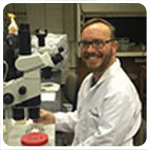
"I am the Collections Manager for the Department of Ichthyology at the Natural History Museum of Los Angeles County. I study the taxonomy, ecology, and anatomy of the early life history stages of marine fishes."
The spatial variability of fish eggs and larvae in Saudi Arabian waters of the Red Sea was studied during an oceanographic cruise in November 2013. A total of 43 stations in nearshore and offshore waters along a 1600-km stretch of the Arabian Peninsula was sampled. A suite of abiotic (temperature, salinity, and dissolved oxygen), biotic (chlorophyll a concentration and zooplankton density), and physical parameters (water depth and distance from shore) were measured at each site. A total of 1428 fish larvae from 41 families and 12 orders were recorded. Densities varied from 0-12.90 eggs/m
Theme: Climate change effects
Download or watch Todd's presentation:
Early Career Event: Keep Networks Alive: 5:00 - 6:30 PM (=1700-1830 EDT = GMT-4)
Early Career Panel discussion “Keeping Networks Alive” | 5 PM (=1700 EDT=GMT-4)
Host & Panelists:




Panelists: Chris Chambers (NOAA Sandy Hook Laboratory), Peter Konstantinidis (Oregon State University), Jacqueline Webb (University of Rhode Island)
Download or watch the discussion here:
Virtual Networking Hour | 1730 EDT (GMT-4)
Technology was not cooperating on this one, but mentors have agreed to hold network meetings separately afterwards






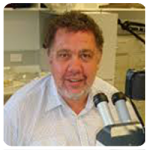








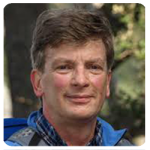
Science session 4: 7:00 - 8:00 PM (EDT = GMT-4)
S4 | 13 – Amanda Hodo / Propagation on display: The Aquarium Conservation Laboratory at Mote Marine Lab and Aquarium 1900 EDT (GMT-5)

"I am originally from Chicago. I live in Sarasota, FL and have worked at Mote Marine Laboratory and Aquarium for over 5 years where I am an Aquarium Biologist. I am managing Mote’s Aquarium Conservation Laboratory, breeding cleaner fish and whatever species I can get eggs from."
In 2018, Mote Aquarium consolidated several of its aquarium aquaculture efforts into one large display, the 'Aquarium Conservation Laboratory'. The ACL was created to highlight a few of Mote Aquarium's efforts to lessen its direct impact on wild populations. Current ACL aquaculture programs are focused on breeding cleaners such as neon gobies and peppermint shrimp. The ACL has also created space for partnership and research collaboration. Mote hopes to propagate several other fish species in this space, and further improve the visibility of its tiny larvae and juveniles to the public.
Theme: Ornamental aquaculture
Download or watch Amanda's presentation:
S4 | 14 – Peter Buston / Limited Dispersal Explains The Spatial Distribution of Siblings in a Reef Fish Population 1915 EDT (GMT-5)

"The Buston lab has broad interests in questions at the frontiers of behavioral ecology, population ecology, and evolutionary biology in the marine environment. Our research on social evolution tries to understand why do some individuals forgo their own reproduction and behave cooperatively in fish societies? This question has challenged evolutionary biologists ever since Darwin pointed out the difficulties that these behaviors posed for his theory of natural selection.We're also active in understanding the probability of larval exchange, or connectivity, between populations in marine metapopulations? This question has been a focus for marine ecologists, because the answer holds the key to understanding metapopulation dynamics and designing networks of marine reserves."
Extensive larval dispersal and a high degree of planktonic cohort mixing were long presumed to disrupt kin aggregations in marine environments. Yet, recent genetic studies of diverse marine taxa have suggested that kin may be found in close proximity to each other after settlement, raising interesting questions about the ecological and behavioral processes that could generate these patterns. We drew on sibship reconstruction to test whether kin cohesion and/or the scale of dispersal could explain patterns of relatedness in the coral reef fish Elacatinus lori. We genotyped 4074 recently settled individuals along a 41 km transect on the Belize Barrier Reef. Because most individuals in the population were unrelated, we found that high-confidence sibling assignments required a large number of microsatellites (>55). Using 71 microsatellites, we documented 371 sibling pairs which were non-randomly distributed on the reef: 50% were >3 km apart and 99% were >18 km apart. The spatial distribution of sibling pairs was congruent with predictions from the limited dispersal hypothesis, and we found no evidence that siblings disperse cohesively. This study provides a framework for linking spatial distributions of siblings to the processes that generate them, highlighting the potential for sibship data and careful spatial analyses to provide new insights into marine larval dispersal.
Theme: Recruitment processes
Download or watch Peter's presentation:
S4 | 15 – Stina Kolodzey / Spatial differences in larval production and success in the temperate reef fish Helicolenus percoides 1930 EDT (GMT-5)

"Originally from Germany, I am living in Dunedin/New Zealand. I am a PhD candidate in the Department of Marine Science at the University of Otago, and interested in spatial ecological differences of marine populations, particularly how the reproductive output of marine fishes varies within and among populations."
Larval size at parturition, oil globule volume at parturition, and change in length over time were used as proxies for differences in larval performance between New Zealand's inner Fiordland and Otago shelf subpopulations. Fatty acid analysis and larval characteristics indicated a higher quality of larvae produced by females from Fiordland, however, the broader range of characteristics of larvae produced by females from the Otago shelf likely corresponds to increased fitness under rapid environmental change. Larval survival and successful recruitment were strongly influenced by the maternal nutritional landscape and resulting differences in lipid composition provided to the larvae.
Theme: Sensory biology & behavior
Download or watch Stina's presentation:
S4 | 16 – Alison Deary / Ecomorphology of early stage Sablefish, Anoplopoma fimbria, collected from the western Gulf of Alaska 1945 EDT (GMT-5)
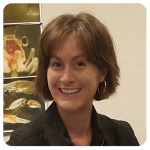
"I am a Research Fisheries Biologist based in Seattle working with NOAA at the Alaska Fisheries Science Center. I am passionate about taxonomic and ecological research on larval fishes and how it can be applied to address important data gaps and improve ecosystem approaches to management."
Sablefish (Anoplopoma fimbria) larvae and early juveniles can grow as fast as 3 mm/day and prey resources of sufficient quality and quantity must be located to support this extraordinary growth rate. However, the foraging ecology of Sablefish, the development of skeletal elements required to find and capture prey, as well as ontogenetic shifts in foraging and development have not been examined in the early stages. The goal of this study is to provide current diet information for this commercially important fishery resource in the wGOA and assess how skeletal development may be influencing foraging. I hypothesize that due to the relatively small gape of Sablefish in the early stages, foraging will be restricted to relatively small prey items, such as copepod nauplii. The ecomorphological data presented here contribute to the ecosystem information that is currently needed for the Gulf of Alaska to successfully understand the impact of environmental factors on the growth and survival of Sablefish and develop new management tools to successfully manage this lucrative stock.
Theme: Form, function & development
Download or watch Ali's presentation:
Fare- and stay well: 8:00 - 8:15 PM (=2000-2015 EDT = GMT-4)
Schedule at a glance | Time zone planer
(starting military time)
| US West Coast (PDT; Seattle) | US East Coast (EDT; New York) | Central Europe (CET; Hamburg) | Australia East Coast (NSW; Sydney) | |
| Opening welcome | 06:45 | 09:45 | 15:45 | 23:45 |
| Science session 1 | 07:00 | 10:00 | 16:00 | 00:00 (24 Jun!) |
| Science session 2 | 08:00 | 11:00 | 17:00 | 01:00 (24 Jun!) |
| Science session 3 | 13:00 | 16:00 | 22:00 | 06:00 (24 Jun!) |
| Early Career Event “Keeping Networks Alive” | 14:00 | 17:00 | 23:00 | 07:00 (24 Jun!) |
| Early Career Event: Virtual Network Hour, hangout with Larval Fish experts | 14:30 | 17:30 | 23:30 | 07:30 (24 Jun!) |
| Science session 4 | 16:00 | 19:00 | 01:00 (24 Jun!) | 09:00 (24 Jun!) |
| Fare- and staywell | 17:00 | 20:00 | 02:00 (24 Jun!) | 10:00 (24 Jun!) |
Hope to see all of you next year for the 44th Larval Fish Conference in Mystic, CT (20-25 June 2021). Save the date!

The Corona-Crisis forced us to post-pone the actual 44th Larval Fish Conference to 2021.
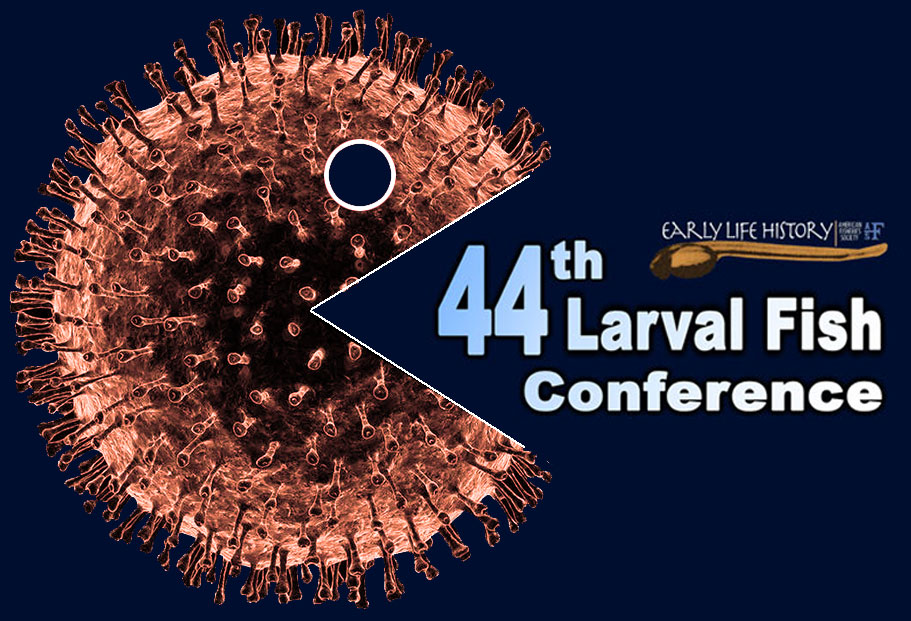
Fellow Larval Fish Enthusiasts!
Over the past weeks, we have witnessed with incredible sadness the continuing and alarming spread of the Covid-19 pandemic. What appeared to still be a hopeful possibility just a short while ago, has now given way to the only responsible, inevitable decision.
We did not have a physical Larval Fish Conference this year.
We know this was sad news to so many, not least to us who had looked forward to welcome you here this summer. But there are also hopeful news. Together, the Ex-Comm of the Early Life History Section and the conference organizers have decided not to just cancel but to postpone the LFC44 by one year to June 2021. And because our community is renowned for its spirit, this year we came together on 23 June during the 1st Virtual Larval Fish Science Town Hall that allowed sharing of research and remote networking.
Somberly
Your LFC organizing committee (Hannes, Eric, Jackie, Jon & Paul)
If you have already registered for the LFC44
Do not worry about your registration fee. It will be 100% reimbursed to you. You do not have to do anything. However, because the Cvent system is overcrowded right now, please allow up to 3-4 weeks for the funds to arrive.
